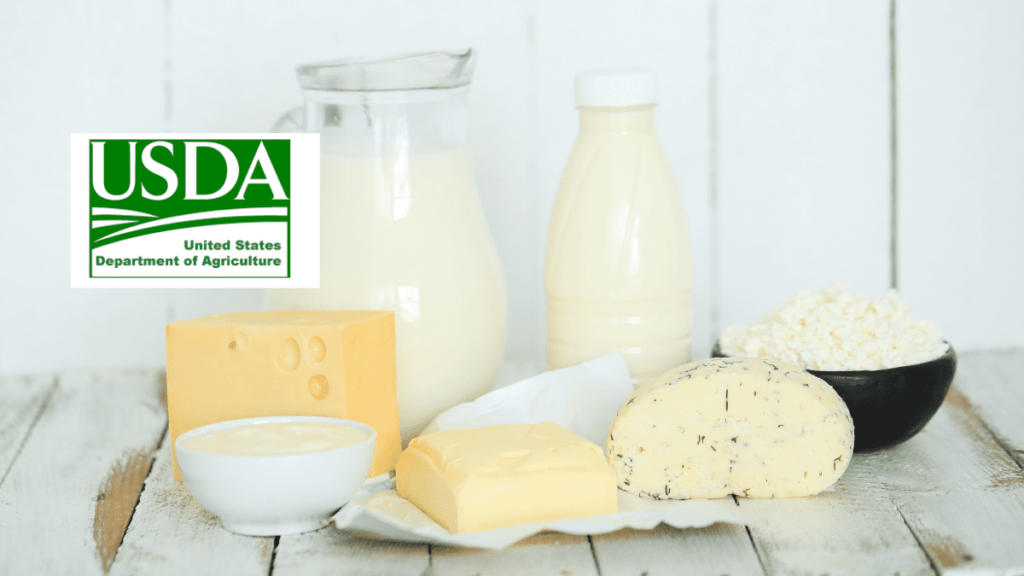The USDA’s latest dairy market report for early 2024 reveals significant changes in the U.S. dairy sector. Butter prices have risen to an average of $3.11 per pound due to steady regional demand, while cheese and nonfat dry milk (NDM) markets exhibit mixed trends. Cheese production varies regionally, with some areas experiencing tighter milk availability and weaker manufacturing. NDM prices have increased, reflecting tighter stocks, and dry whey remains in short supply. Fluid milk production is seasonally lower, with varying regional results and rising Class I milk demand. Overall, the dairy market is navigating price fluctuations and supply challenges across different products.
The USDA’s latest dairy market report reveals significant developments in the U.S. dairy sector. Butter prices have surged to an average of $3.11 per pound, reflecting steady regional demand. In contrast, cheese and nonfat dry milk (NDM) markets exhibit mixed trends, indicating varied dynamics across different dairy products.
Butter Market Insights
- Price Trends: Butter prices have climbed to $3.1050 per pound, with a weekly average of $3.1100. This represents a slight increase of $0.0255 from the previous period.
- Demand and Production: Demand for butter varies across regions. The West sees a mix of stronger and weaker domestic demand, while the Central and East regions report steady demand from retail but lighter demand from food service sectors. Cream availability is tightening nationwide, influencing butter production schedules. Manufacturers are experiencing mixed results, with some areas reporting lighter bulk production lines, consistent with seasonal trends.
Cheese Market Highlights
- Production and Pricing: Cheese production schedules are reported as steady to lighter throughout the U.S. Lighter cheese production in the East is attributed to tightening milk availability, while the Central region shows active production with tighter inventories. The West faces weaker cheese manufacturing, with available spot cheese loads and some delays in contractual commitments.
- Cold Storage: The NASS Cold Storage report for June indicates a 1% decrease in total natural cheese stocks from May and a 6% decrease from June 2023, highlighting ongoing inventory tightness.
Nonfat Dry Milk (NDM) and Dry Whey Trends
- NDM Prices: Nonfat dry milk prices for Grade A closed at $1.2400 per pound, with a weekly average of $1.2425, up by $0.0195. High heat NDM prices have also increased, reflecting tighter stocks.
- Dry Whey Prices: Extra grade dry whey prices closed at $0.6100 per pound, with a weekly average of $0.6090, up by $0.0680. The availability of dry whey remains tight across all regions.
Fluid Milk Production and Demand
- Regional Variations: Fluid milk volumes are seasonally lower across most regions due to high temperatures and humidity. The Midwest and West report declines in milk production, while Florida sees varied results. The Pacific Northwest shows a slight increase. Demand for Class I milk is rising as school preparations begin, with strong demand for cream and condensed skim milk across all regions.
- Cream Multiples: Cream multiples are reported as 1.30 – 1.50 in the East, 1.22 – 1.39 in the Midwest, and 1.18 – 1.37 in the West, indicating strong demand and tight availability.
Dry Products Overview
Prices and Demand: Low/medium nonfat dry milk prices have risen, with tight spot availability in the Southwest. Dry buttermilk prices remain mostly unchanged, while dry whole milk prices have seen slight increases. Dry whey prices have climbed, with tight availability, whereas whey protein concentrate (WPC) 34% prices are stable but with weak domestic demand. Lactose prices remain steady, with limited production due to lighter milk intakes. Acid and rennet casein prices are stable with mixed demand.
The USDA dairy report for the first half of 2024 highlights a complex market landscape with rising butter prices, mixed trends in cheese and nonfat dry milk, and varied regional production and demand dynamics. The dairy sector continues to adapt to evolving market conditions, with significant price fluctuations and supply challenges across different dairy products.



